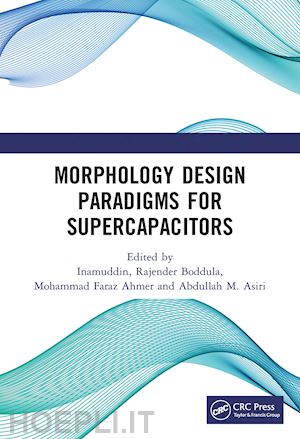Dr. Inamuddin is currently working as an Assistant Professor in the Chemistry Department, Faculty of Science, King Abdulaziz University, Jeddah, Saudi Arabia. He is a permanent faculty member (Assistant Professor) at the Department of Applied Chemistry, Aligarh Muslim University, Aligarh, India. He obtained Master of Science degree in Organic Chemistry from Chaudhary Charan Singh (CCS) University, Meerut, India, in 2002. He received his Master of Philosophy and Doctor of Philosophy degrees in Applied Chemistry from Aligarh Muslim University (AMU), India, in 2004 and 2007, respectively. He has extensive research experience in multidisciplinary fields of Analytical Chemistry, Materials Chemistry, and Electrochemistry and, more specifically, Renewable Energy and Environment. His research interests include ion exchange materials, a sensor for heavy metal ions, biofuel cells, supercapacitors, and bending actuators. Dr. Rajender Boddula is currently working for the Chinese Academy of Sciences-President's International Fellowship Initiative (CAS-PIFI) atthe National Center for Nanoscience and Technology (NCNST, Beijing). His specialized researchareas focus on energy conversion and storage,including nanomaterials, graphene, polymer composites, heterogeneous catalysis, photoelectrocatalytic water splitting, biofuel cell, and supercapacitors.Dr. Mohammad Faraz Ahmer is presently working as an Assistant Professor in the Department of Electrical Engineering, Mewat Engineering College, Nuh Haryana, India. He completed M.Tech. (2009) and Bachelor of Engineering (2007) degrees in Electrical Engineering in Aligarh Muslim University, Aligarh, in the first division. He obtained a Ph.D. degree in 2016 on his thesis entitled “Studies on Electrochemical Capacitor Electrodes.” His scientific interests include electrospun nanocomposites and supercapacitors. He is actively engaged in searching of new methodologies involving the development of organic composite materials for energy storage systems.Prof. Abdullah M. Asirihas beenthe Head of the Chemistry Department at King Abdulaziz University in Jeddah, Saudi Arabia,since October 2009, and he is the founder and the Director of the Center of Excellence for Advanced Materials Research (CEAMR). He is the Professor of Organic Photochemistry. He graduated from King Abdulaziz University (KAU) with B.Sc. in Chemistry in 1990 and gained a Ph.D. from University of Wales, College of Cardiff, U.K. in 1995. His research interest covers color chemistry, synthesis of novel photochromic and thermochromic systems, synthesis of novel coloring matters and dyeing of textiles, materials chemistry, nanochemistry and nanotechnology, and polymers and plastics. A major achievement of Prof. Asiri is the discovery of tribochromic compounds, a new class of compounds which change from slightly or colorless to deep colored when subjected to small pressure or grinding.












